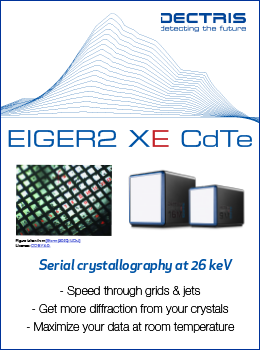
IUCr journals news
Two new virtual special issues of Journal of Synchrotron Radiation
![Thumbnail [Thumbnail]](https://www.iucr.org/__data/assets/image/0008/149174/xq5001thumbnailNL.png)
PhotonDiag2018 Workshop special issue
The Journal of Synchrotron Radiation's first virtual special issue contains some highlights of the PhotonDiag2018 Workshop on FEL Photon Diagnostics, Instrumentation, and Beamlines Design, which took place in Hamburg, Germany, in September 2018. The workshop, the fourth in the PhotonDiag series, focused on advances in X-ray optics and photon diagnostics, one of the most dynamically evolving topics in the X-ray science world.
Guest-edited by Daniele Cocco, Jan Grünert, Elke Ploenjes, Kai Tiedtke and Marco Zangrando, these virtual proceedings start with the articles focused on diagnostics to study the spectral distribution, the wavefront, the intensity, the profile, the polarization and the temporal distribution. The combined use of photon diagnostics and electron diagnostics to study machine performance follows, and the third part deals with more conventional X-ray optics, from metrology over adaptive focusing mirrors to crystal monochromators. The proceedings close with one crucial component to most experiments and diagnostics, i.e. the X-ray detectors.X-ray Free-Electron Lasers special issue
The last five years have seen a remarkable explosion in both the availability and capabilities of X-ray free-electron lasers (XFELs). Considering this rapid progress, it was considered timely for another special FEL-related issue in the Journal of Synchrotron Radiation, following the first one published in May 2015. The current virtual edition, guest-edited by P. H. Fuoss, I. Schlichting, T. Tschentscher and M. Yabashi, provides information to guide both X-ray experts and new users.
The issue features articles describing a variety of sources and facilities, including FLASH, LCLS, SACLA, SwissFEL, PAL and EuXFEL, that give insight into the current status, development plans and scientific directions at these facilities. Papers focused on individual instruments provide detailed information into new experimental capabilities along with recent results highlighting the scientific opportunities being developed at XFELs. Overviews of the design and performance of important subsystems, for example laser systems for time-resolved measurements, give critical information to plan successful XFEL experiments. In particular, a number of papers focus on the infrastructure requirements and challenges at the European XFEL, the first of the next generation of megahertz repetition rate XFEL producing hard (≲1 Å wavelength) X-rays. Finally, new X-ray scientific methods are constantly being ported to, and developed at, FEL sources. This edition highlights a few of these capabilities including spectroscopy techniques.
Copyright © - All Rights Reserved - International Union of Crystallography









